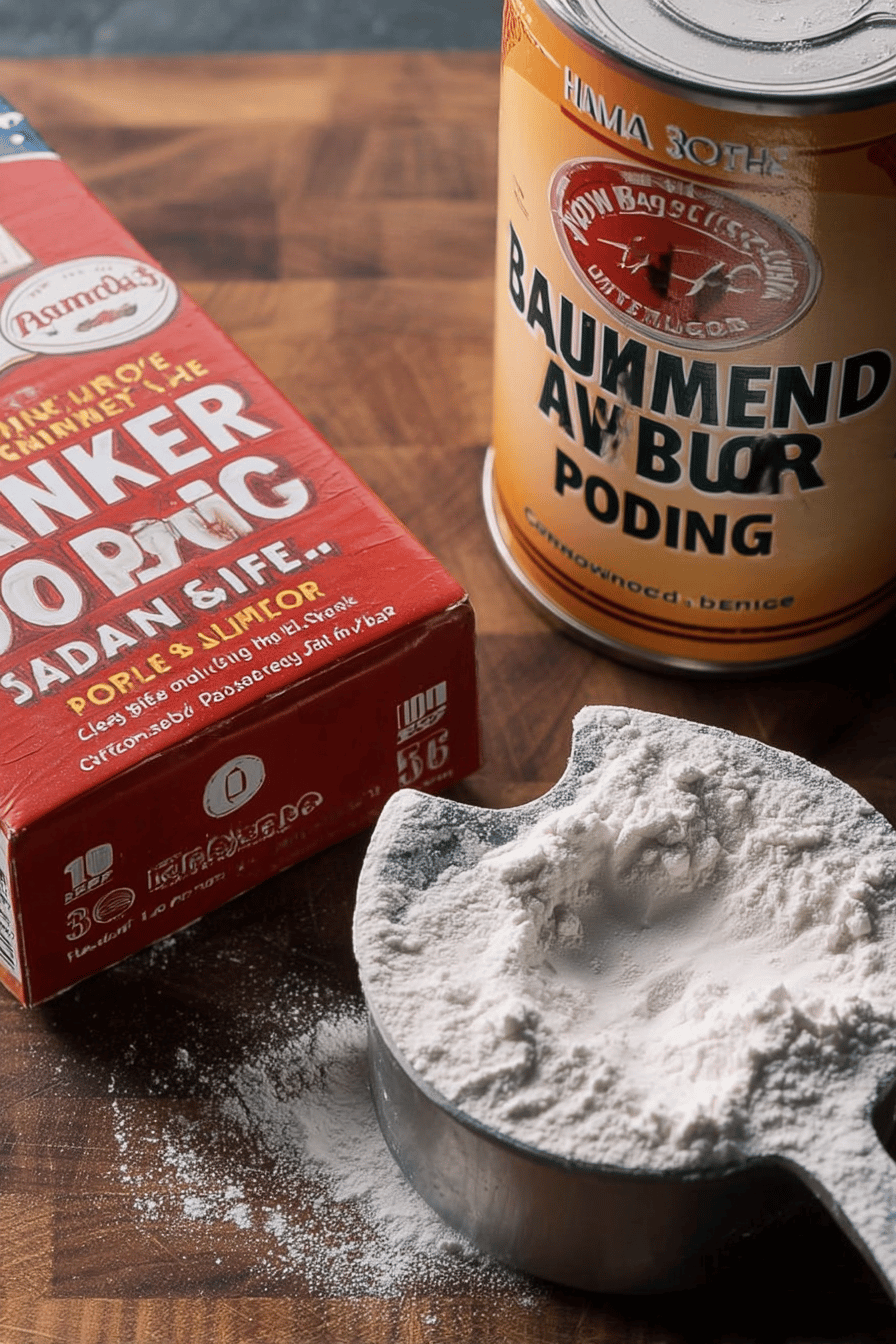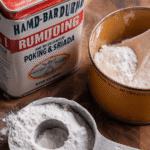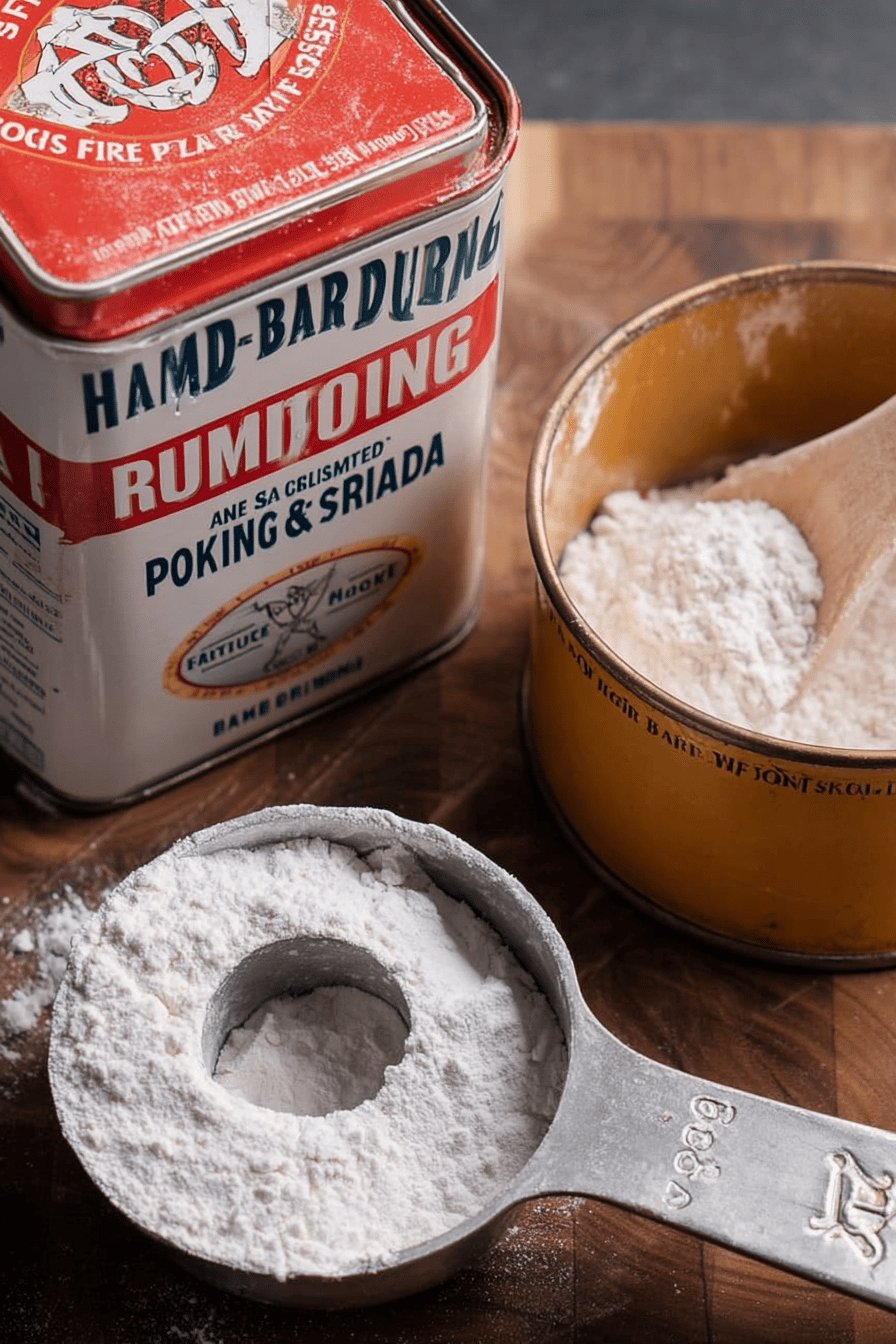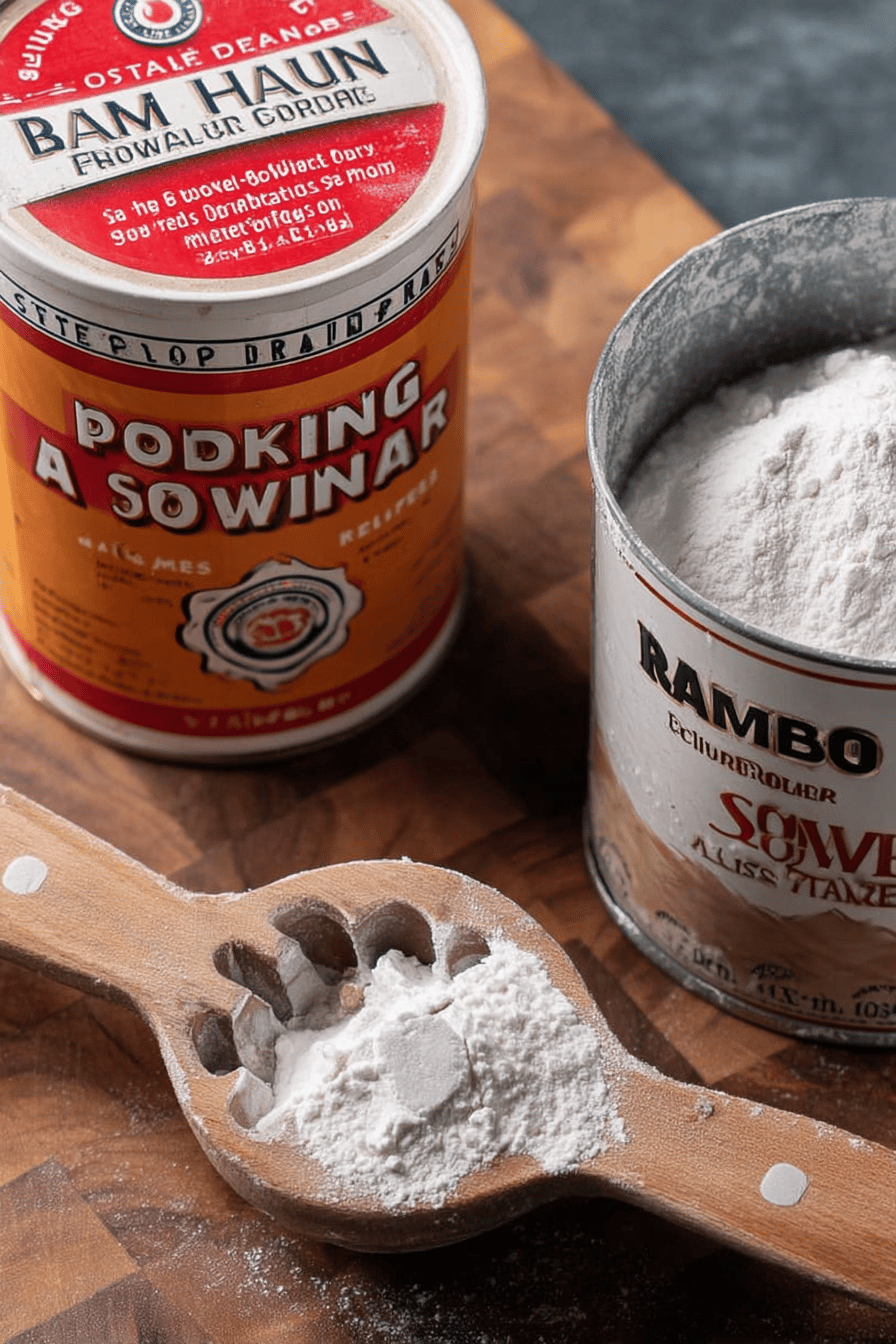Why You’ll Love This Baking Powder Vs Baking Soda
Understanding the differences between baking powder and baking soda can transform your baking routine, making every recipe turn out just right. For home cooks like you, who juggle busy schedules and family needs, this knowledge simplifies your kitchen efforts and leads to delicious results every time. Let’s dive into why mastering baking powder vs baking soda opens up a world of easy, healthy, and versatile baking options.
Baking powder vs baking soda offers ease of preparation. This recipe simplifies your baking process with quick cooking times and minimal steps, allowing you to achieve perfect results effortlessly. You’ll appreciate the health benefits, as using the right amount ensures nutritional advantages like aiding digestion and promoting wellness through balanced ingredients. Plus, its versatility means you can adapt it for various dietary needs, whether you’re going vegan, gluten-free, or keeping it low-calorie.
The distinctive flavor comes from the balanced use, which enhances the dish’s taste and makes it stand out compared to typical recipes. Baking soda is pure sodium bicarbonate, while baking powder is a mixture that includes baking soda, cream of tartar, and often cornstarch, giving you more control over your bakes. For students and working professionals, this means whipping up treats without much hassle, inspiring joy in everyday cooking.
Benefits for Different Lifestyles
For busy parents, these insights help create quick family favorites that everyone enjoys. Baking enthusiasts find excitement in experimenting, while seniors appreciate the straightforward approach that brings back fond memories. Overall, it’s about creating memorable moments around the table with simple, effective techniques.
Jump To
- 1. Why You’ll Love This Baking Powder Vs Baking Soda
- 2. Essential Ingredients for Baking Powder Vs Baking Soda
- 3. How to Prepare the Perfect Baking Powder Vs Baking Soda: Step-by-Step Guide
- 4. Dietary Substitutions to Customize Your Baking Powder Vs Baking Soda
- 5. Mastering Baking Powder Vs Baking Soda: Advanced Tips and Variations
- 6. How to Store Baking Powder Vs Baking Soda: Best Practices
- 7. FAQs: Frequently Asked Questions About Baking Powder Vs Baking Soda
- 8. Baking Powder Vs Baking Soda
Essential Ingredients for Baking Powder Vs Baking Soda
In any baking adventure, the right ingredients make all the difference, especially when dealing with baking powder vs baking soda. To help you get started, here’s a structured list of all the essentials pulled from our recipe. Each item is listed with precise measurements to ensure your bakes turn out perfectly every time.
- 1 teaspoon baking powder – provides leavening and helps batter rise evenly.
- 1/2 teaspoon baking soda – acts as a leavening agent and balances acidity.
- 2 cups all-purpose flour – forms the base of the batter providing structure.
- 1/2 cup sugar – adds sweetness and affects browning.
- 1 cup milk – moistens the batter and activates leavening agents.
- 1/4 cup vegetable oil – adds moisture and tenderness.
- For vegan options: Use plant-based milk such as almond or soy milk.
- For gluten-free alternatives: Substitute all-purpose flour with gluten-free flour blend.
- For low-calorie: Replace sugar with natural low-calorie sweeteners like stevia.
This list covers every ingredient mentioned, making it easy to follow along. Remember, baking soda is pure sodium bicarbonate, so it needs an acid to work, whereas baking powder includes everything needed for rising on its own.
How to Prepare the Perfect Baking Powder Vs Baking Soda: Step-by-Step Guide
Getting the hang of baking powder vs baking soda starts with a simple, step-by-step process that anyone can follow. First, preheat your oven to 350°F (175°C) and grease your baking pan to prevent sticking, then gather all ingredients measured accurately for a smooth process. This setup ensures your bakes rise just right and avoids any kitchen surprises.
Next, in a large mixing bowl, sift together the flour, baking powder, and baking soda to ensure even distribution and eliminate lumps. Baking powder contains baking soda mixed with cream of tartar and often cornstarch, so it activates with liquid alone, while baking soda needs acid like the milk or lemon juice in your recipe. For example, if you’re substituting, use 1 teaspoon of baking powder to replace 1/4 teaspoon of baking soda along with 1/2 teaspoon of cream of tartar or 1 teaspoon of lemon juice or vinegar.
In a separate bowl, combine sugar, milk, and vegetable oil, then stir well to blend the wet ingredients and activate the leavening agents. Gradually add the dry ingredients into the wet mixture while stirring gently, ensuring a smooth, lump-free batter, and adjust for dietary preferences by substituting milk or flour as needed. For internal inspiration, check out our delicious lemon oatmeal cookies recipe that uses similar techniques for a fresh twist.
Baking and Cooling Steps
Pour the batter into the prepared pan, spreading it evenly, which can be adapted for gluten-free or vegan mixtures without changing baking time. Bake in the preheated oven for 25-30 minutes, checking doneness with a toothpick, and adjust time slightly for different oven types or ingredient substitutions. Finally, remove from the oven and allow to cool for 10 minutes before slicing and serving, ensuring the best texture and flavor. Serve your dish warm or at room temperature, optionally garnished with fresh fruits or nuts to enhance presentation and taste.
Dietary Substitutions to Customize Your Baking Powder Vs Baking Soda
Everyone has unique needs, so customizing recipes with baking powder vs baking soda is straightforward and fun. You can easily swap ingredients to fit your lifestyle, whether you’re watching your diet or exploring new flavors. Let’s break it down into clear categories to make substitutions simple.
| Category | Substitution Option | Reason |
|---|---|---|
| Protein Alternatives | Replace eggs with flaxseed meal mixed with water | For a vegan option that keeps things binding |
| Flour Options | Use chickpea flour instead of wheat flour | Provides a gluten-free, protein-rich base |
| Milk Alternatives | Substitute dairy milk with almond or oat milk | Suits lactose-free preferences easily |
| Sweeteners and Flavors | Use pumpkin puree or mashed bananas | Adds natural sweetness and moisture |
For vegetable, sauce, and seasoning modifications, try swapping vanilla extract with almond or citrus essence to alter flavor profiles, or use cinnamon, nutmeg, or cardamom for warm spice variations. Adjust salt levels or choose low-sodium alternatives to meet dietary needs, and remember that when substituting baking powder for baking soda, the ratio is key for the best results.
Mastering Baking Powder Vs Baking Soda: Advanced Tips and Variations
Once you’re comfortable with the basics of baking powder vs baking soda, it’s time to level up your skills with some pro tips. For optimal rise, combine these leavening agents carefully to avoid premature activation; mix wet and dry ingredients just until combined to prevent toughness in your bakes. Baking soda is pure sodium bicarbonate and reacts with acids, while baking powder already has those acids built in, so use them wisely for the fluffiest outcomes.
Flavor variations are endless when you experiment with additives like citrus zest, cocoa powder, or espresso, which complement the leavening effects beautifully. Presentation tips include garnishing your finished dishes with a dusting of powdered sugar, fresh berries, or a drizzle of glaze to make them look as good as they taste. If you’re looking for more ideas, our churro cheesecake cookies recipe shows how to incorporate these for a delightful twist.
Make-Ahead Strategies
Make-ahead options let you prepare batter in advance and refrigerate it overnight, or bake in mini portions for convenient snacking. This is perfect for food enthusiasts and travelers who want quick treats on the go. When substituting, always use 1 teaspoon of baking powder for 1/4 teaspoon of baking soda plus acid to keep flavors balanced.
How to Store Baking Powder Vs Baking Soda: Best Practices
Proper storage keeps your baking powder and baking soda fresh, ensuring they work effectively in future recipes. Store baked goods containing these ingredients in airtight containers in the refrigerator for up to 3 days to maintain freshness and texture. For longer-term needs, freeze portions wrapped tightly to prevent moisture and odors, and they can last up to 3 months without losing quality.
Reheating is simple; do it gently in an oven or microwave to preserve the original texture and flavor, avoiding any dryness. For external reference on storage, check out this reliable source on storing baking ingredients. Meal prep considerations include keeping batter chilled if preparing in bulk, which helps retain the leavening potency until you’re ready to bake, making it ideal for busy parents and working professionals.

FAQs: Frequently Asked Questions About Baking Powder Vs Baking Soda
What is the difference between baking powder and baking soda?
Baking soda is pure sodium bicarbonate, which requires an acid and moisture to activate and produce carbon dioxide gas, causing dough or batter to rise. Baking powder contains sodium bicarbonate along with an acidifying agent and a drying agent, allowing it to rise on its own when mixed with liquid. Use baking soda when your recipe includes acidic ingredients like yogurt or lemon juice, and baking powder when there are no added acids.
Can I substitute baking powder for baking soda in a recipe?
You can substitute baking powder for baking soda, but you need about three times more baking powder to achieve the same leavening effect. However, this may alter the taste and texture, as baking powder contains additional ingredients. It’s best to use the leavening agent specified in your recipe for optimal results.
What happens if I use too much baking soda or baking powder in baking?
Using too much baking soda can cause a metallic or bitter taste and may make baked goods rise rapidly then collapse. Excess baking powder can result in a bitter aftertaste and cause the batter to overflow due to excessive rising. Always measure carefully to maintain the balance in flavor and texture.
How do I know baking powder or baking soda is still good to use?
To test baking soda, mix a small amount with vinegar; it should fizz vigorously if active. For baking powder, add a teaspoon to hot water; it should bubble immediately. If there’s little or no reaction, replace the leavening agent for best baking results.
Why do some recipes call for both baking powder and baking soda?
Some recipes include both because they contain acidic ingredients and require extra leavening. Baking soda neutralizes the acid and aids rising, while baking powder provides additional lift. This combination helps achieve proper texture, lightness, and balanced flavor in baked goods.

Baking Powder Vs Baking Soda
Description
🧂 Baking Soda vs Baking Powder are essential leavening agents with distinct chemical properties that impact your baking.
📚 Understanding their differences and uses helps you achieve the perfect rise and texture in your recipes.
Ingredients
– 1 teaspoon baking powder provides leavening and helps batter rise evenly
– 1/2 teaspoon baking soda acts as a leavening agent and balances acidity
– 2 cups all-purpose flour forms the base of the batter providing structure
– 1/2 cup sugar adds sweetness and affects browning
– 1 cup milk moistens the batter and activates leavening agents
– 1/4 cup vegetable oil adds moisture and tenderness
– plant-based milk such as almond or soy milk for vegan options
– gluten-free flour blend for gluten-free alternatives
– natural low-calorie sweeteners like stevia for low-calorie
Instructions
1-Getting the hang of baking powder vs baking soda: starts with a simple, step-by-step process that anyone can follow. First, preheat your oven to 350°F (175°C) and grease your baking pan to prevent sticking, then gather all ingredients measured accurately for a smooth process. This setup ensures your bakes rise just right and avoids any kitchen surprises.
2-Next, in a large mixing bowl, sift together the flour, baking powder, and baking soda to ensure even distribution and eliminate lumps. Baking powder contains baking soda mixed with cream of tartar and often cornstarch, so it activates with liquid alone, while baking soda needs acid like the milk or lemon juice in your recipe. For example, if you’re substituting, use 1 teaspoon of baking powder to replace 1/4 teaspoon of baking soda along with 1/2 teaspoon of cream of tartar or 1 teaspoon of lemon juice or vinegar.
3-In a separate bowl, combine sugar, milk, and vegetable oil, then stir well to blend the wet ingredients and activate the leavening agents. Gradually add the dry ingredients into the wet mixture while stirring gently, ensuring a smooth, lump-free batter, and adjust for dietary preferences by substituting milk or flour as needed. For internal inspiration, check out our delicious lemon oatmeal cookies recipe that uses similar techniques for a fresh twist.
4-Baking and Cooling Steps: Pour the batter into the prepared pan, spreading it evenly, which can be adapted for gluten-free or vegan mixtures without changing baking time. Bake in the preheated oven for 25-30 minutes, checking doneness with a toothpick, and adjust time slightly for different oven types or ingredient substitutions. Finally, remove from the oven and allow to cool for 10 minutes before slicing and serving, ensuring the best texture and flavor. Serve your dish warm or at room temperature, optionally garnished with fresh fruits or nuts to enhance presentation and taste.
Notes
⚖️ Use proper measurements to ensure correct chemical reactions and texture.
🍋 Adding an acid with baking soda is necessary for leavening.
🧁 Baking powder is a complete leavening agent suitable for recipes lacking acidic ingredients.
- Category: Baking Basics
- Method: Mixing and chemical leavening
- Cuisine: Universal
Keywords: Baking Soda, Baking Powder, Differences, Uses


